Key takeaways:
- Container orchestration automates deployment, scaling, and operations of applications, significantly reducing manual processes and human error.
- Popular tools like Kubernetes, Docker Swarm, and Apache Mesos facilitate efficient management and scalability of containerized applications.
- Challenges include managing dependencies, scaling effectively, and resource management, all of which require careful monitoring and adjustment.
- Effective communication, proactive monitoring, and continuous learning are essential for successful container orchestration and to keep pace with technological advancements.
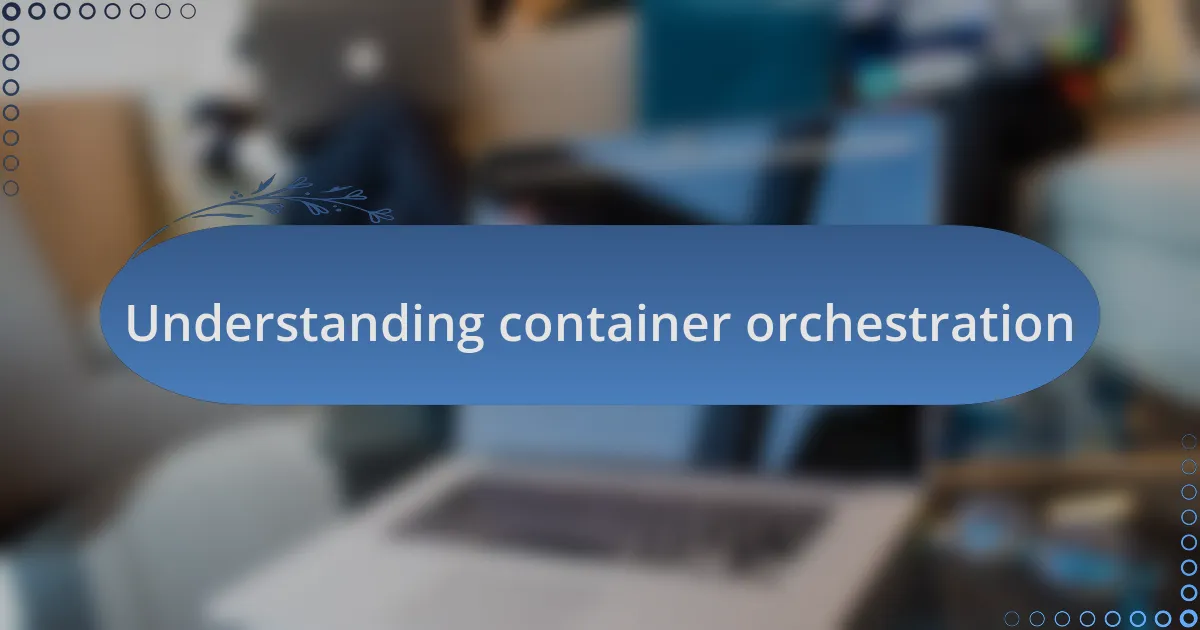
Understanding container orchestration
Container orchestration is essentially the management of containerized applications across a cluster of machines. I remember the first time I deployed an application using orchestration tools; the synchronization felt almost magical. It allowed me to focus more on coding rather than worrying about the underlying infrastructure, making me wonder how I ever managed without it before.
At its core, orchestration automates the deployment, scaling, and operations of application containers. When I realized I could easily spin up or down instances based on load, it stirred a sense of relief. It made me think, why struggle with manual processes when there are tools designed to simplify our lives?
Understanding container orchestration also involves grasping the various tools available, like Kubernetes and Docker Swarm. It’s fascinating how these platforms automate many tasks I used to dread, and I’ve often found myself asking: What could I achieve if I harnessed this power fully? It opens up a world of possibilities in app management and scalability that can transform not just how we develop, but also how we think about application deployment.
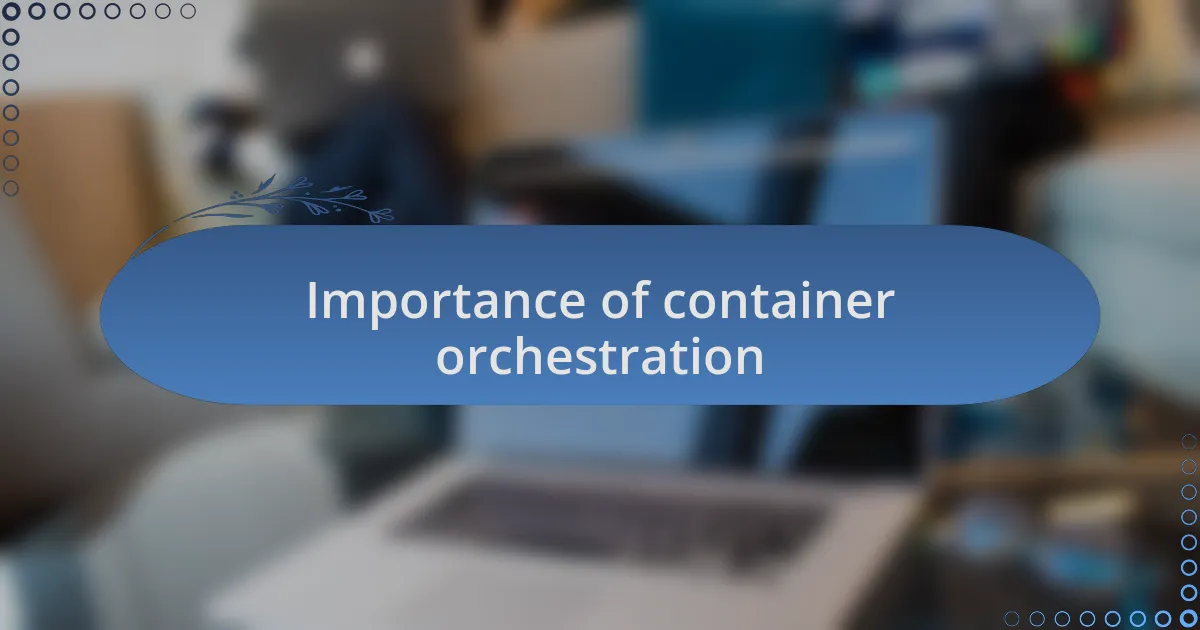
Importance of container orchestration
The importance of container orchestration cannot be overstated, especially when it comes to managing microservices efficiently. I recall working on a project where we had to deploy multiple services simultaneously; without orchestration, coordinating those deployments would have been a nightmare. The ability to automate processes not only saved us time but also reduced the potential for human error—can you imagine the headache of manual configurations?
Moreover, scalability is a game changer with container orchestration. I once faced a sudden surge in user traffic, and thanks to orchestration tools, I could scale my application almost instantly. It crossed my mind, how often do developers miss opportunities simply due to the inability to adapt quickly to changing demands?
Lastly, the ability to maintain high availability is paramount in today’s digital landscape. I can’t think of a time when downtime was acceptable, and orchestration tools ensure that applications remain resilient. It’s remarkable how these technologies can reroute traffic seamlessly, providing a cushion against potential failures. How reassuring is it to know that your application has that safety net?
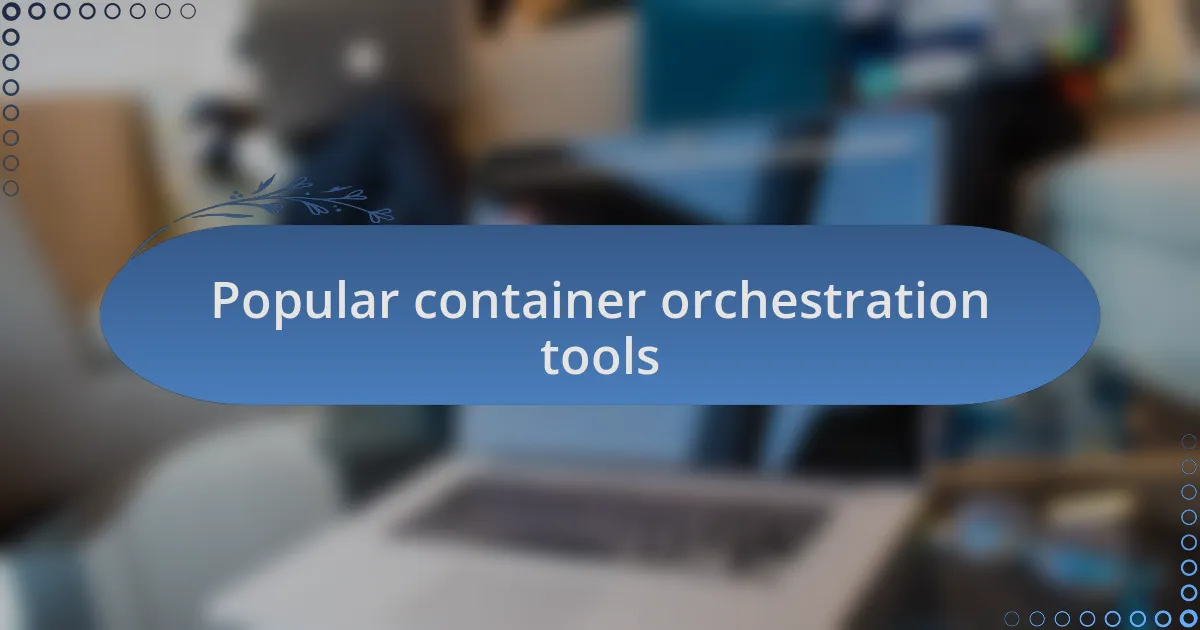
Popular container orchestration tools
When discussing popular container orchestration tools, Kubernetes often tops the list. My first experience with Kubernetes was both exhilarating and overwhelming. The learning curve is steep, and I remember feeling a mix of frustration and triumph when I finally managed to deploy a simple application. The flexibility it offers is unparalleled—have you ever encountered a tool that lets you scale and manage your containers with such precision?
Another big contender in the orchestration arena is Docker Swarm. I still recall how straightforward it felt to set up. The fact that it integrates seamlessly with Docker made my transition into container orchestration much smoother. For those looking for simplicity while still getting the job done, Swarm can be an ideal choice. I often find myself asking, how many developers overlook tools that balance ease of use with reliability?
Then there’s Apache Mesos, which I initially approached out of curiosity. The way it can manage not just containers but also other workloads is fascinating. It’s almost like having a Swiss Army knife for your infrastructure. Implementing Mesos taught me about resource allocation at a different level. Does that spark a desire in you to explore how diverse workloads can be managed under one umbrella?
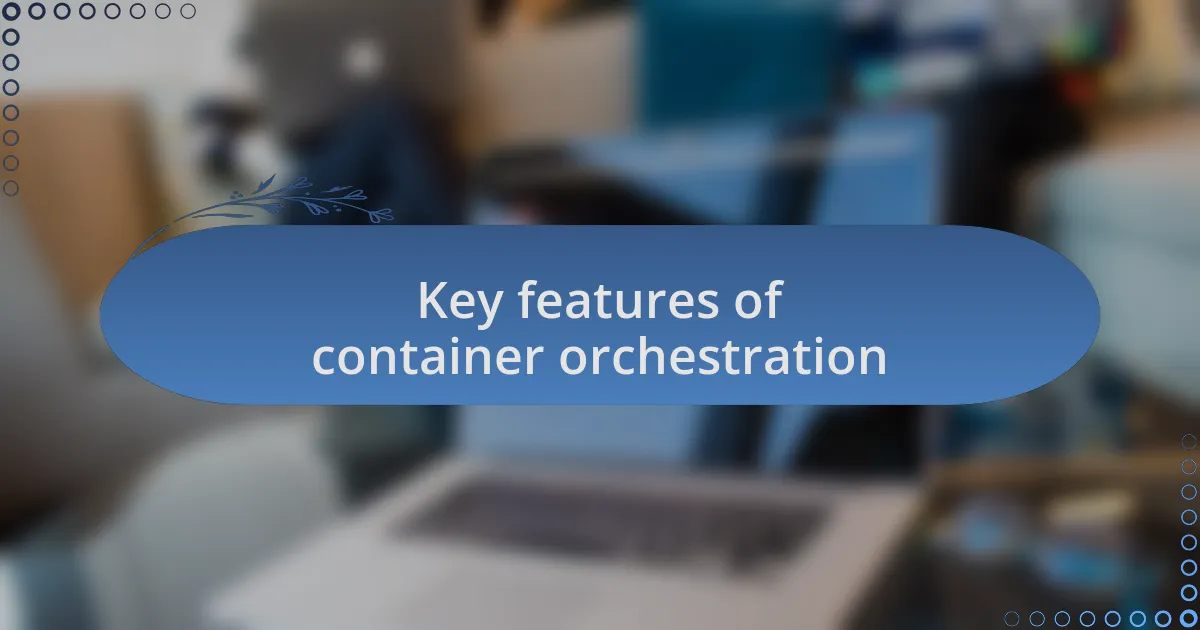
Key features of container orchestration
One of the standout features of container orchestration is automated scaling. I recall experimenting with an application that experienced sudden spikes in traffic. It was incredible to watch as my orchestration tool automatically spun up additional containers to accommodate the increased load. This feature not only saved me from potential downtime but also allowed me to focus on improving the application rather than micromanaging resources. Have you ever wished for a helping hand during peak times?
Another crucial aspect I appreciate is self-healing. There was a time when a container unexpectedly crashed in my deployment, and I felt a sense of panic initially. However, the orchestration platform detected the failure and automatically replaced the problematic container without any manual intervention required. This kind of resilience is essential in today’s fast-paced development environments—who wouldn’t want that level of stability?
Lastly, an effective container orchestration tool offers centralized management, which I find extremely valuable. Managing multiple containers across various environments can get overwhelming. I remember using a dashboard that provided a unified view of my container health and performance metrics. It felt like having a control center at my fingertips. Isn’t it reassuring to have all your critical information in one place?

My personal experience with orchestration
My journey with container orchestration began when I was tasked with deploying a microservices architecture for a project. I vividly remember the challenges I faced in coordinating numerous containers; it was like herding cats! Once I embraced orchestration tools, the complexity transformed into a symphony, allowing me to deploy services with confidence and precision, which felt incredibly empowering.
A particular instance that sticks with me is when I configured rolling updates. I had been hesitant at first, fearing potential disruptions to users. However, witnessing the seamless transition as new versions of services rolled out with zero downtime was a game-changer. It was the closest thing to magic I had experienced in web development. How often do we get to make updates without users even noticing?
Another memorable experience was fine-tuning my resource allocations within the orchestration tool. Initially, I overestimated the needs of my containers and faced performance issues. After monitoring metrics and adjusting, I discovered the balance that allowed my application to thrive. I can still recall the sense of satisfaction I felt when everything finally clicked into place. Isn’t it rewarding when those little adjustments lead to significant performance improvements?
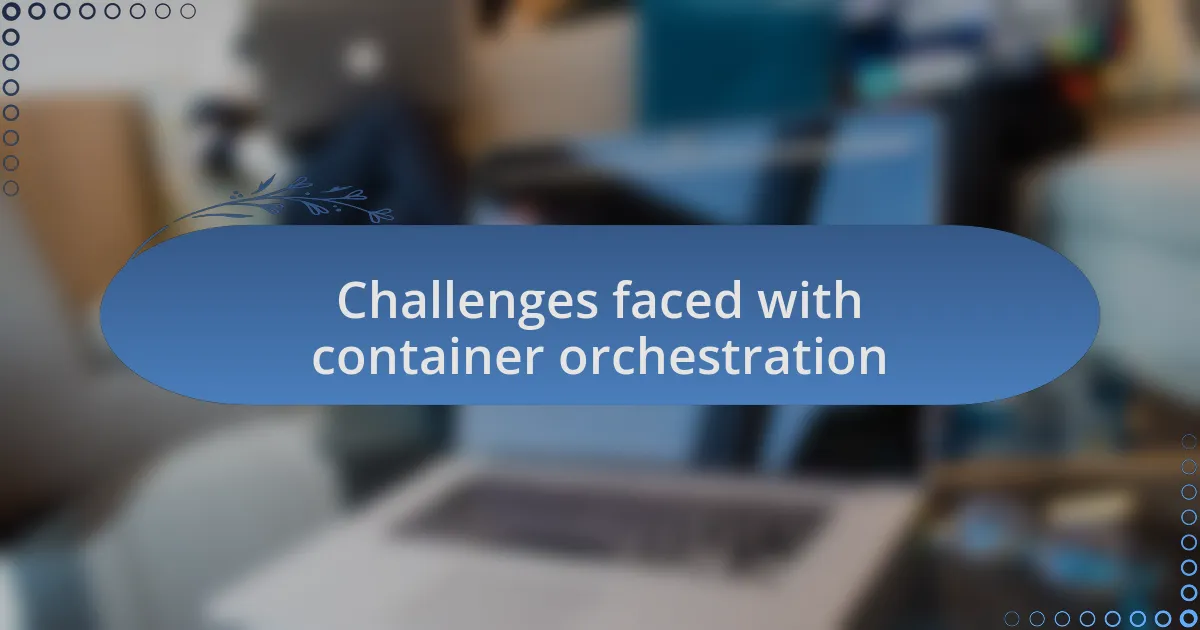
Challenges faced with container orchestration
One challenge I often encountered in container orchestration was managing dependencies between services. In one project, a missing library in one container caused cascading failures in others, leading to a frustrating scramble to identify the root cause. I learned the importance of thorough dependency mapping; it can really be the difference between a smooth deployment and a stressful debugging session.
Scaling is another hurdle that can leave developers feeling overwhelmed. I remember a moment when traffic surged unexpectedly, and my initial setup struggled to keep up. I had to think on my feet, quickly adjusting my scaling policies. This experience taught me that automated scaling isn’t just a nice-to-have; it’s essential for handling real-world demands without losing customers – or sanity!
Lastly, resource management proved to be a tricky puzzle. In my early days with orchestration, I made the mistake of allocating resources too conservatively. It wasn’t until an application failed to perform under load that the gravity of my oversight hit me. I realized that understanding the nuances of resource requests and limits is key to optimal performance; an area where even seasoned developers can trip up. Isn’t it fascinating how something as fundamental as resource allocation can have such a profound impact on application success?
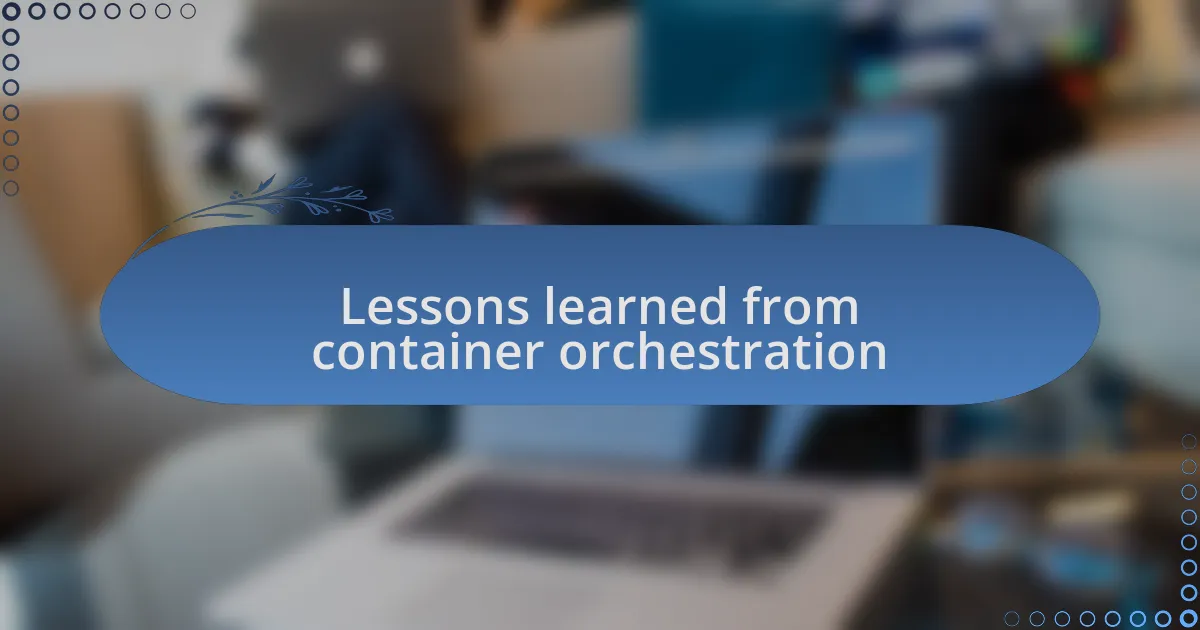
Lessons learned from container orchestration
One significant lesson I took away from container orchestration is the critical role of effective communication between teams. During one project, when our development and operations teams weren’t synced, it led to a chaotic deployment that felt like watching a train derail in slow motion. This experience instilled in me the importance of fostering a collaborative culture; ensuring everyone is on the same page can save a lot of headaches down the line.
Another eye-opener was the realization that monitoring and logging are indispensable in a containerized environment. I vividly remember a situation where an application crashed, but pinpointing the cause was like searching for a needle in a haystack without proper logs. This taught me that proactive monitoring tools are not merely optional; they are essential for navigating the complexities of distributed systems.
Lastly, I learned firsthand that continuous learning is vital in the ever-evolving field of container orchestration. I used to believe that once I nailed the basics, I could sit back and relax. But as new tools and best practices emerged, I quickly understood that staying updated is part of the job. How can we expect to innovate when we’re not keeping pace with technology? Embracing a mindset of continuous improvement has not only kept my skills sharp but has opened up new opportunities for growth.